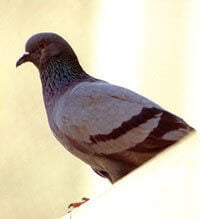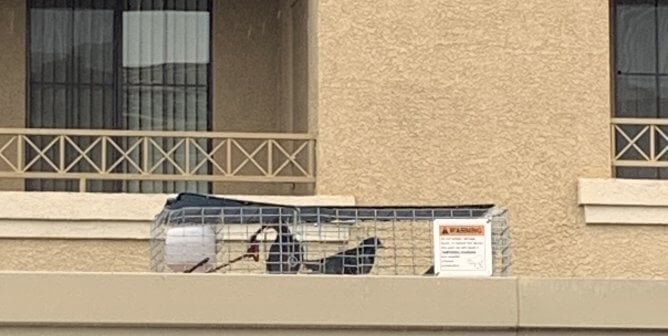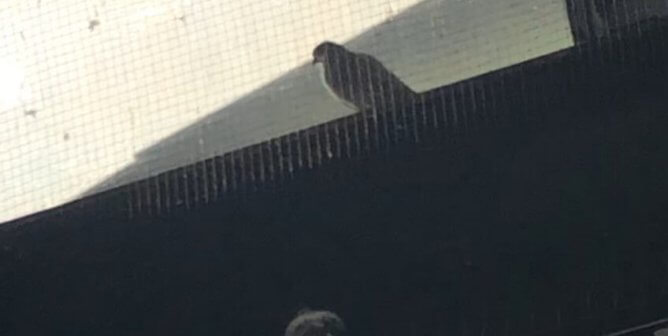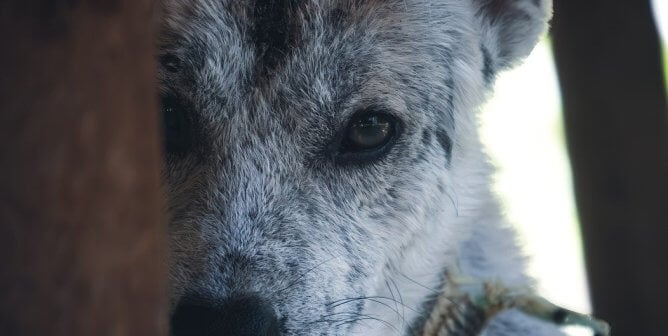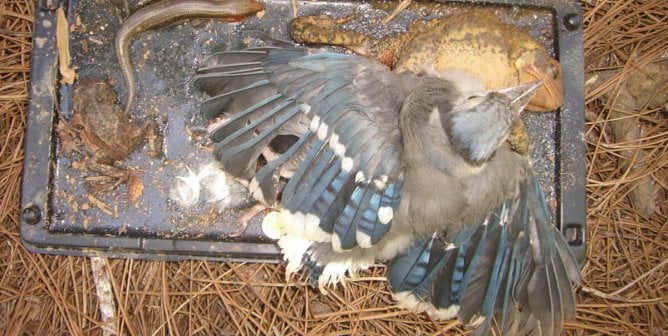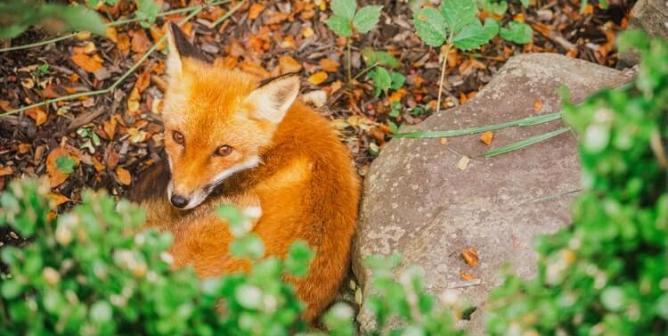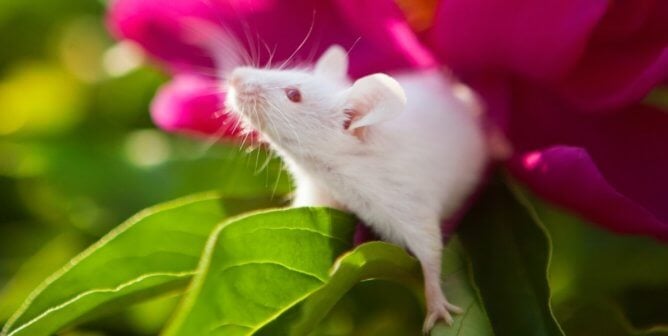Living in Harmony With Pigeons
The strutting, bobbing pigeons who inhabit nearly all of North America today were brought to the New World by settlers who kept them as domesticated companions, racers, or couriers. Feral descendants of these bird pioneers adapted quickly to the varied climates across the continent, and they continue to thrive as humans modify the landscape.
Pigeons have a long and distinguished record of service as messengers during war, including during World War I, World War II, the Korean War, and the Vietnam War. Some birds were even awarded medals for their heroism. Pigeons have been used by the CIA for aerial photography, and their service is honored in the CIA Museum. But modern technology has now replaced the need for pigeons.
About Pigeons
Pigeons have been around for several million years. They have a typical life span of about 15 years, although some can live for 30 years. The oldest known pigeon lived to be 33.
Their diet includes grain, seeds, insects, and plants, but they will eat almost anything that humans give them. The rising popularity of recreational wildlife-feeding and the wide variety of artificial food sources in urban areas cause pigeon populations to skyrocket.
The birds live in flocks with an even number of males and females—mated pairs and their offspring. Flock sizes are self-regulating according to food availability. In areas where food sources are abundant, pairs will reproduce more frequently through the spring and fall breeding seasons and sometimes throughout the year. If food is scarce, they will reproduce only as much as their environment will allow, producing only a few babies per breeding season or none at all.
Mom and Pop Pigeon
Like humans, pigeons are family-oriented and devoted to their offspring. Pigeons begin to pair off when they’re about 6 months old, and they mate for life. Both parents care for their young, called “squabs,” taking turns incubating the eggs and feeding the babies when they hatch. Pigeons flock in large numbers in order to protect themselves from cats, hawks, owls, and rats and are very protective of younger birds. During breeding season, when there are many squabs in the flock, adult birds will feed any hungry baby, not just their own. Squabs are fully feathered after a month and independent after six weeks, but some stay in the nest longer if their parents allow it.
Did You Know?
- Pigeons are able to return to their home roosts even when released in a new location several thousand miles away by sensing the Earth’s magnetic field through the use of a magnetic “map” in their beaks.
- Reuters was originally created as a line of pigeon posts to bridge gaps in the telegraph system.
- Pigeons can fly as fast as 60 miles per hour and have the stamina to cover astounding distances. A pigeon released in Namibia, Africa, in 1845 flew the 7,000 miles home to London in just 55 days.
- A joint Coast Guard and Navy venture called Project Sea Hunt trained pigeons to peck a key when they spotted the bright orange color used for life vests. The birds became adept at spotting the vests floating in the open ocean, saving lives by pinpointing shipwreck victims for rescue teams.
Solving Conflicts Compassionately
When wildlife and humans live close together, problems can arise—but they are easily solved with patience and creative thinking. Humane approaches to pigeon control are cheaper and more effective than lethal methods, which are often bad for the environment and other animals as well. Besides, pigeons who are trapped and released in another area often return to their homes, and killing birds only creates a vacancy that will inevitably be filled by newcomers.
Because pigeons congregate in large numbers, accumulated droppings can become a nuisance, so modifying popular pigeon hangouts so that they are undesirable to them is a key step to avoiding pigeon problems.
Less Food, Fewer Pigeons
A flock of pigeons will continue to grow as long as a food supply supports the birds. The most effective way of reducing pigeon populations is to eliminate their food sources, which means discouraging people from feeding them and covering trash cans. If food is scarce, pigeons will stop reproducing and may even move away. When it comes to pigeons’ eating habits, an ounce of prevention can be worth a pound of cure.
Humane Pigeon Deterrents
There is a variety of devices that can be used to deny pigeons access to nesting areas or to frighten them away. Screens and netting can be used on attics, soffit vents, signs, and even the rafters of barns and warehouses so that birds can’t fly up into nooks and crannies.
Wire coils or spikes on railings, pipes, or building edges will keep birds from perching there, and boards or sheet metal angled against flat surfaces can be used to make a slope that pigeons can’t grasp.
Effigies of predatory animals can be effective if they are realistic-looking and are moved frequently; pigeons catch on and ignore stationary models.
Mylar streamers that blow in the wind and reflect light may startle pigeons but won’t always drive them away, and repellent devices that imitate predators’ calls or make other loud noises are generally more disruptive to people than they are to pigeons.
Most types of humane pigeon-deterrent products can be purchased from companies such as Bird Barrier, which can even refer you to professional wildlife control operators in your area who have received expert training in how to install these bird-control systems.
Poisons, such as the notorious Avitrol and DRC-1339, and sticky polybutene substances, which are sold under product names such as Tanglefoot™ or Hot Foot™, should never be used to control pigeons. Poisons and sticky gels are inherently cruel, and when birds die from poisoning and more food is available, birds will have more offspring. Poison is also deadly to nontarget animals, such as other birds, predators (including protected species) who eat poisoned birds, and companion animals.
Sticky material meant to make birds feel uncomfortable when landing on surfaces can trap smaller animals who touch it, causing them to break bones as they struggle, to starve to death, or to be picked apart by predators. Besides the cruelty involved, nothing spells out “public relations nightmare” more clearly than dead and dying animals writhing and convulsing in public areas.
As natural habitats are turned into skyscrapers and parking lots, animals are forced to adapt to their new surroundings. Humans, too, need to work to find ways to cohabitate harmoniously with all species.

